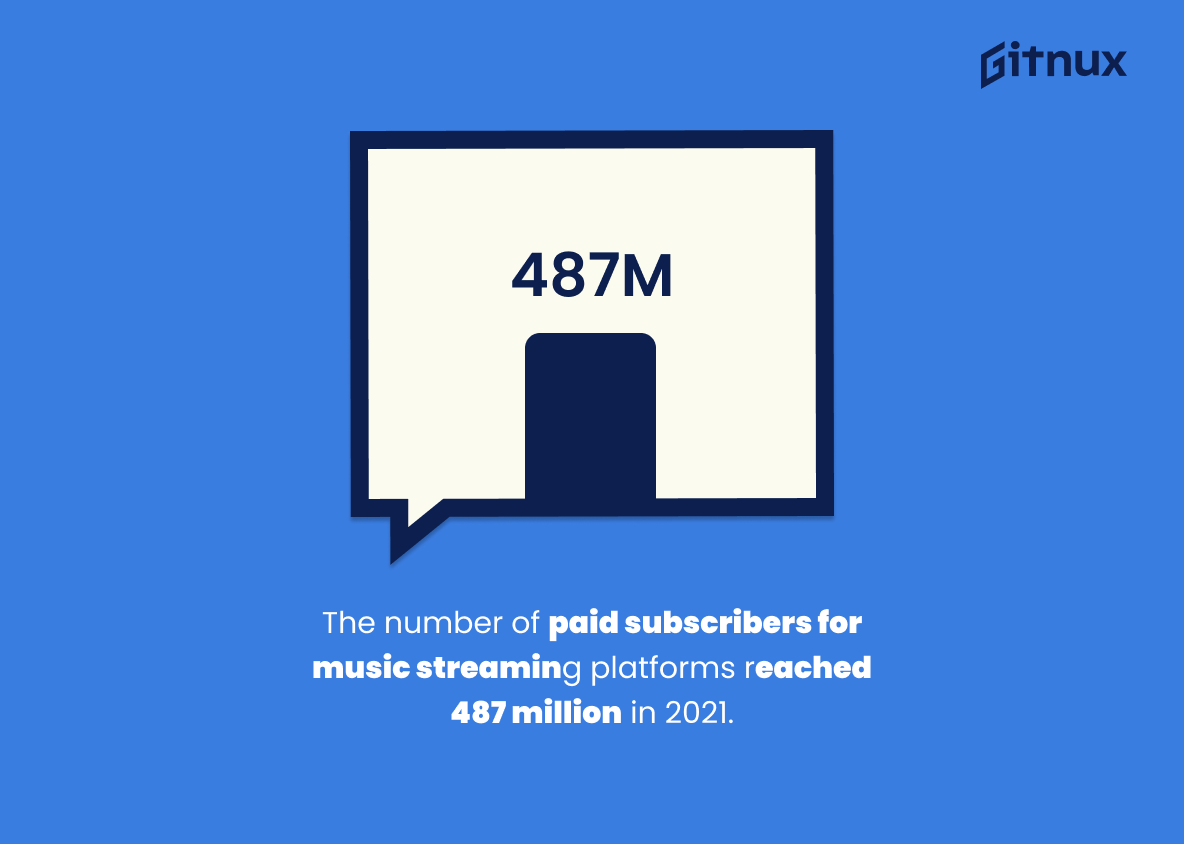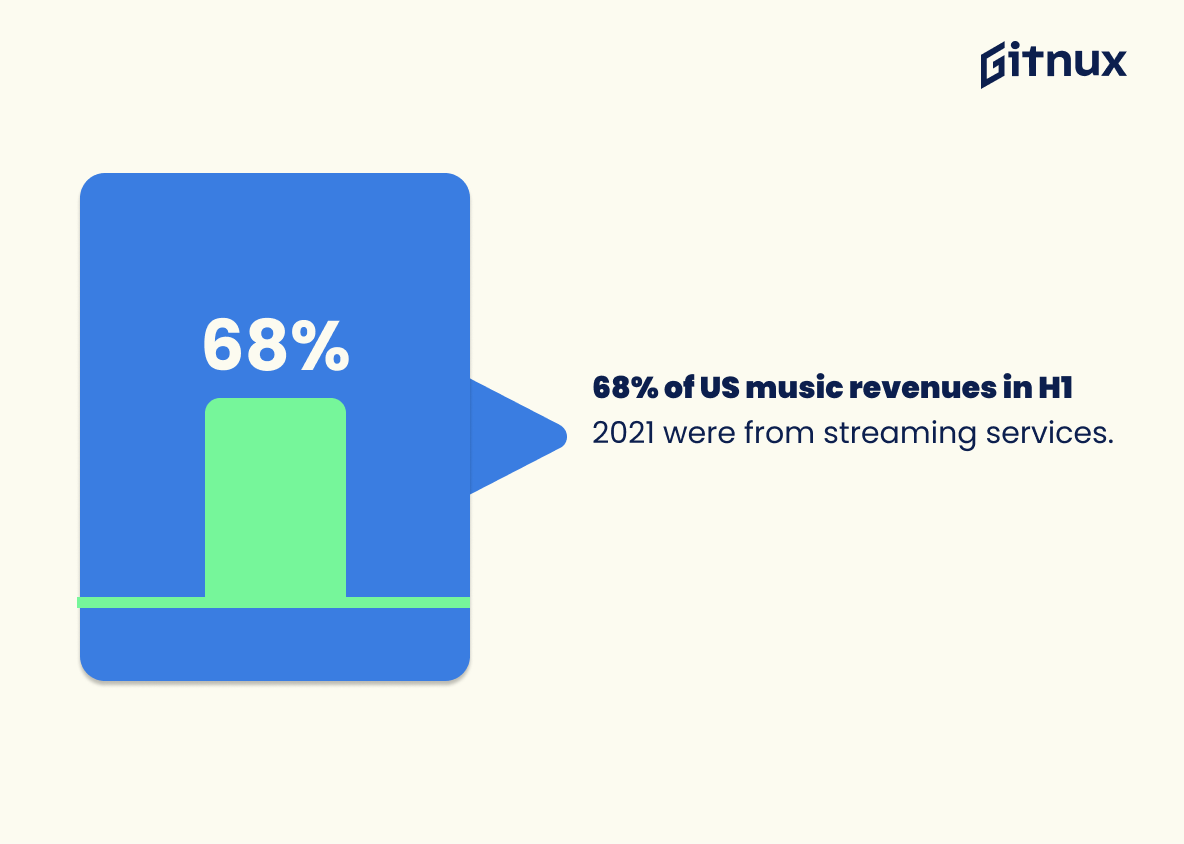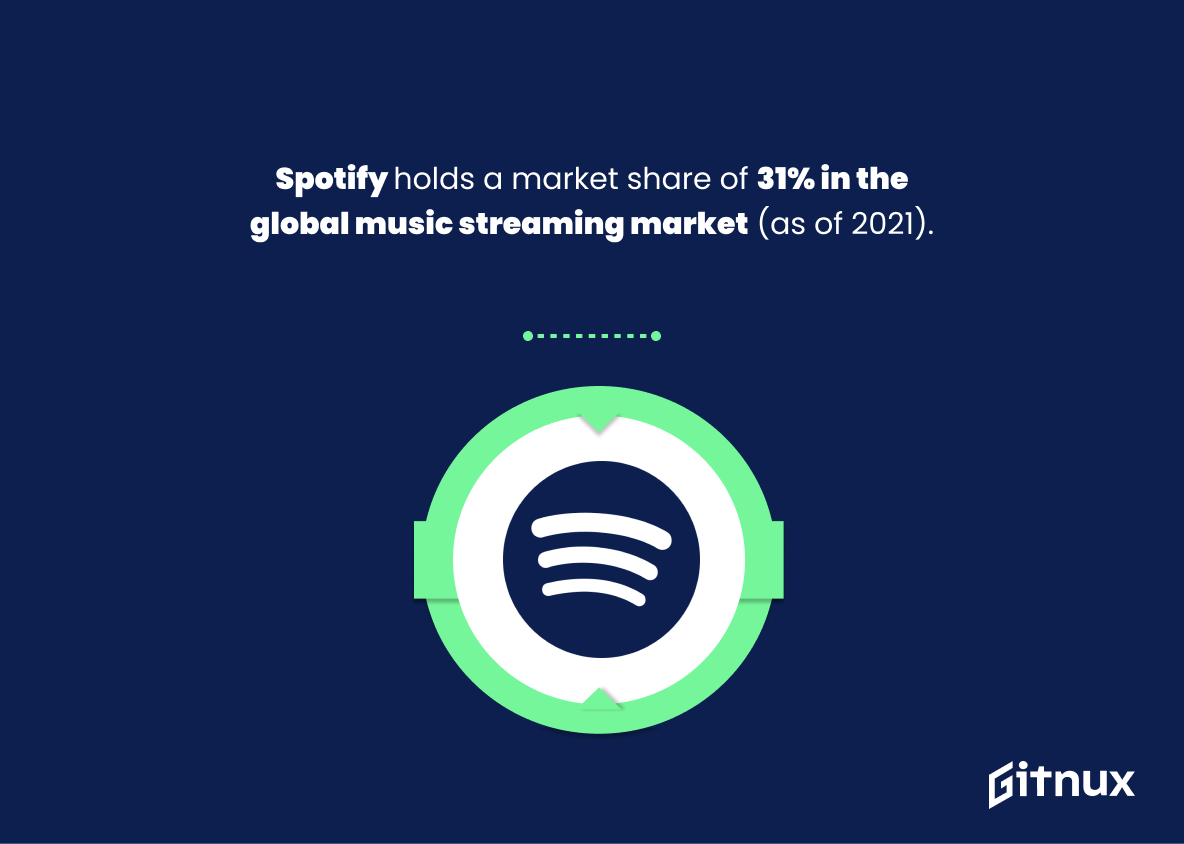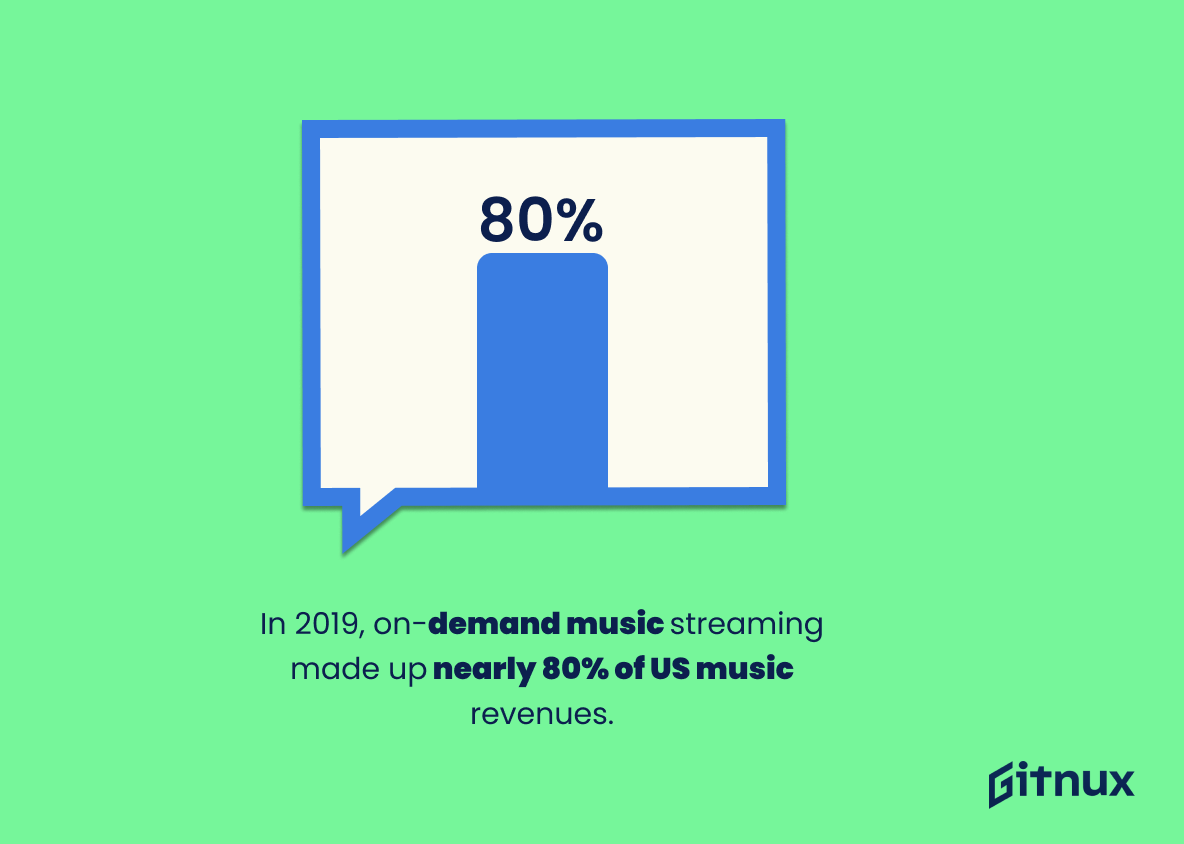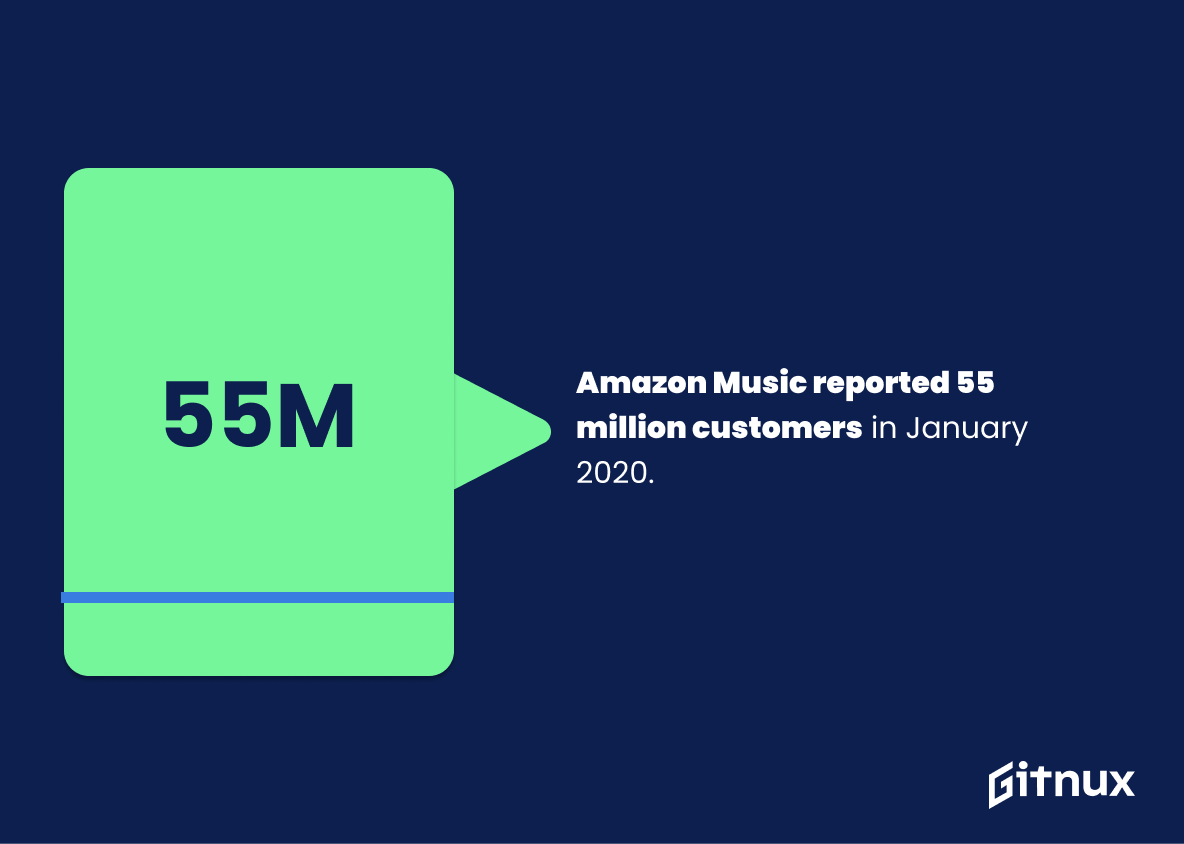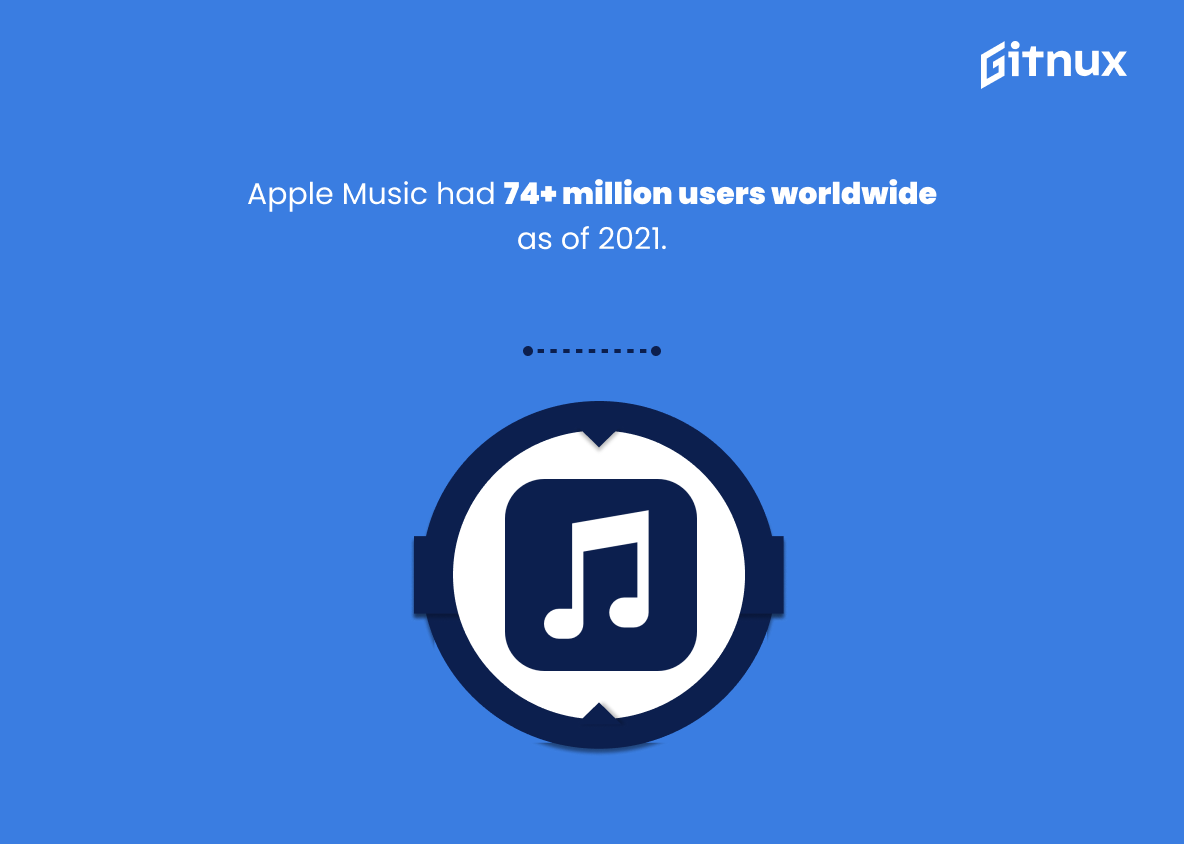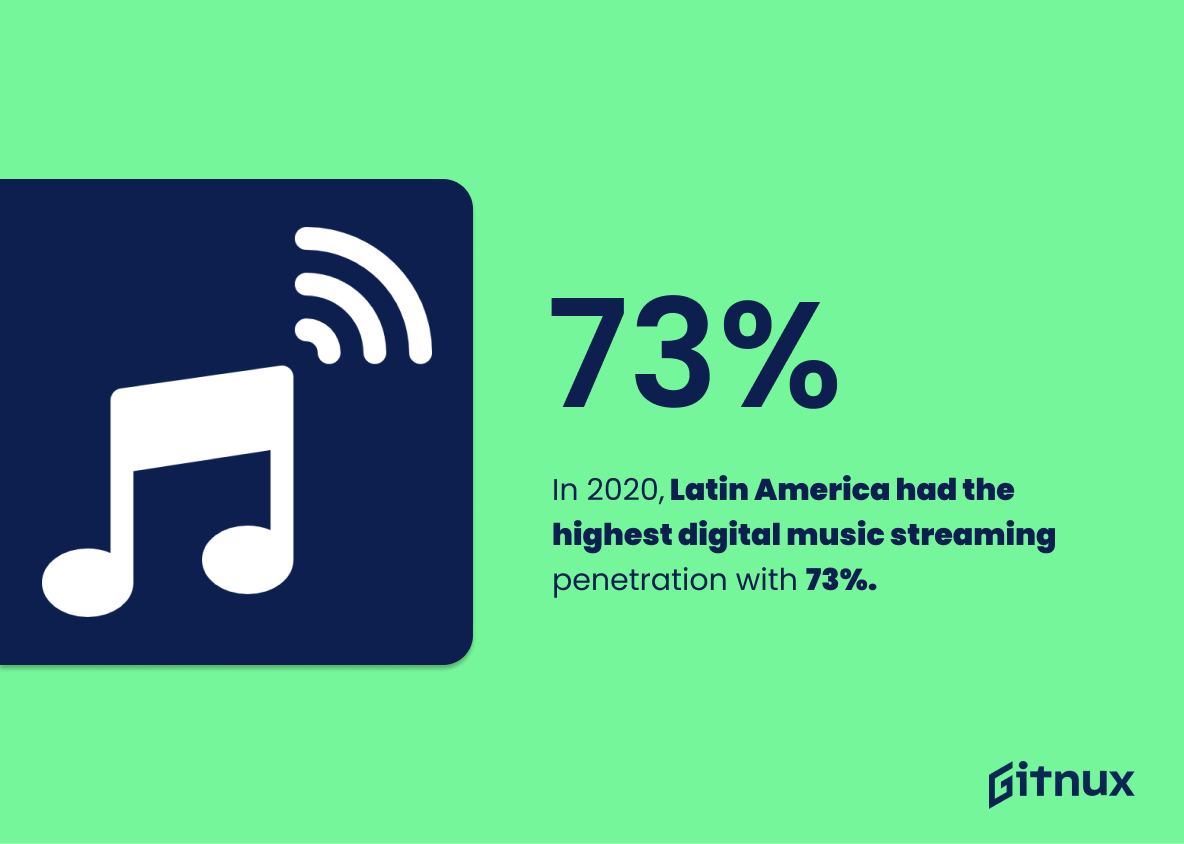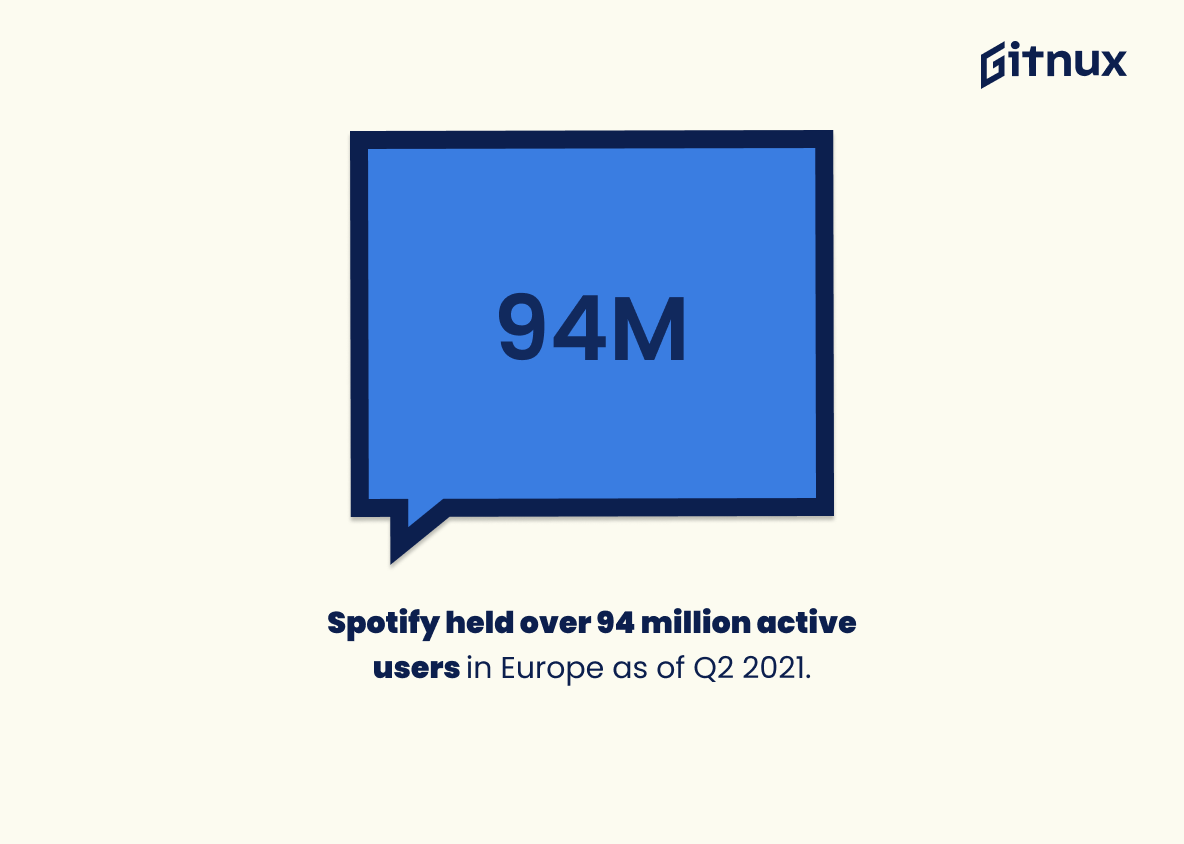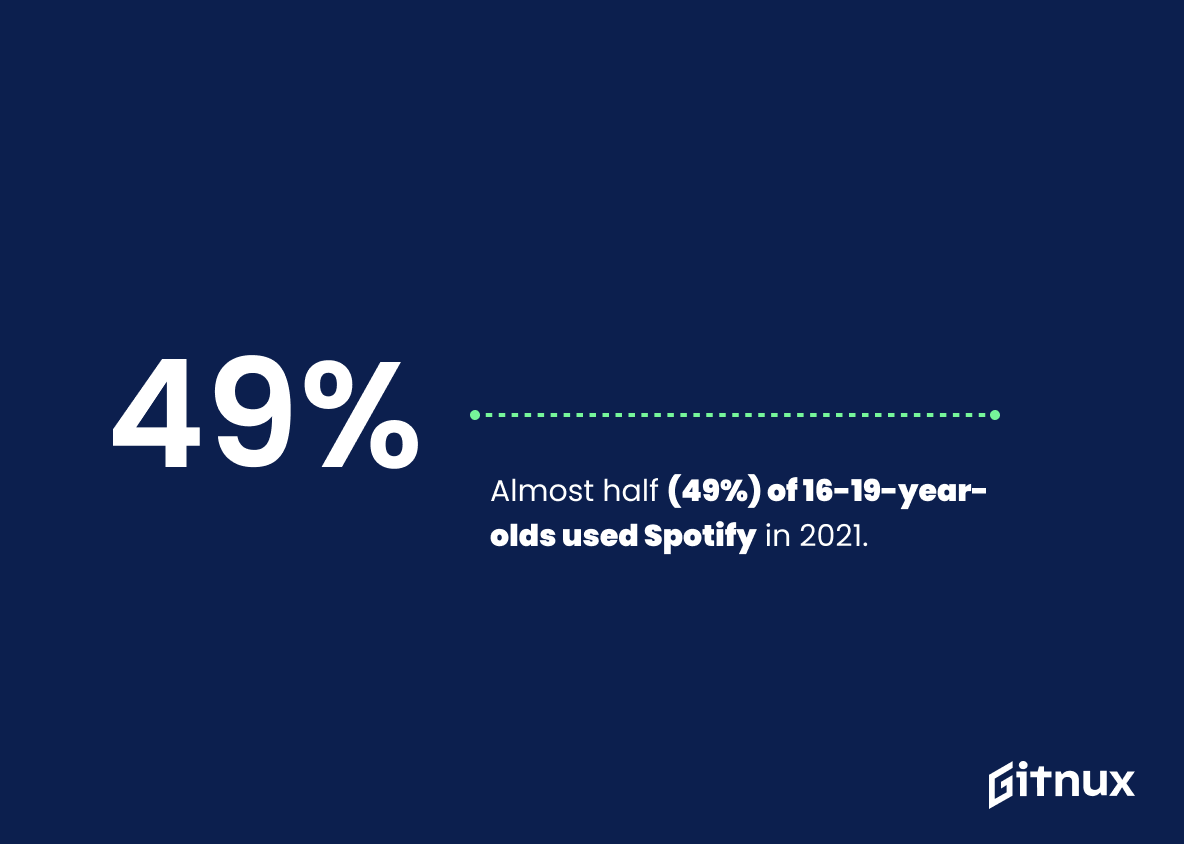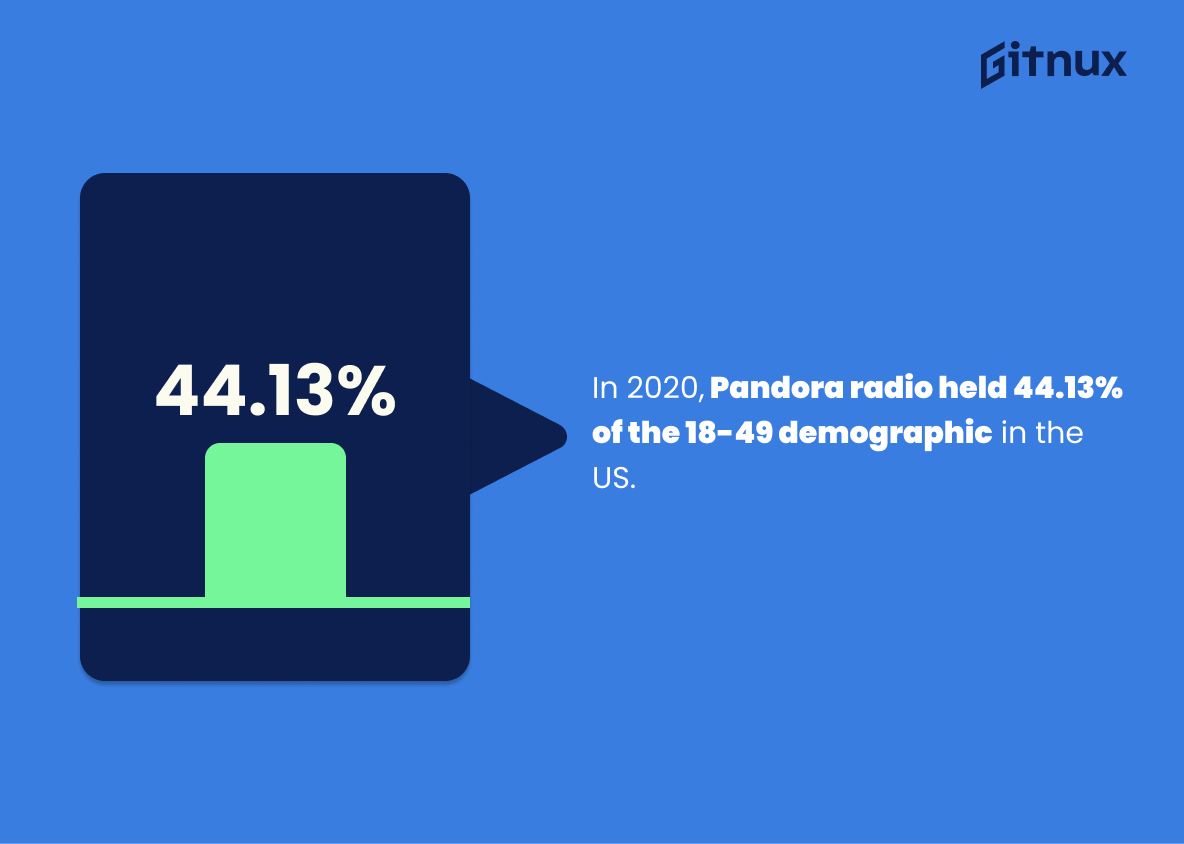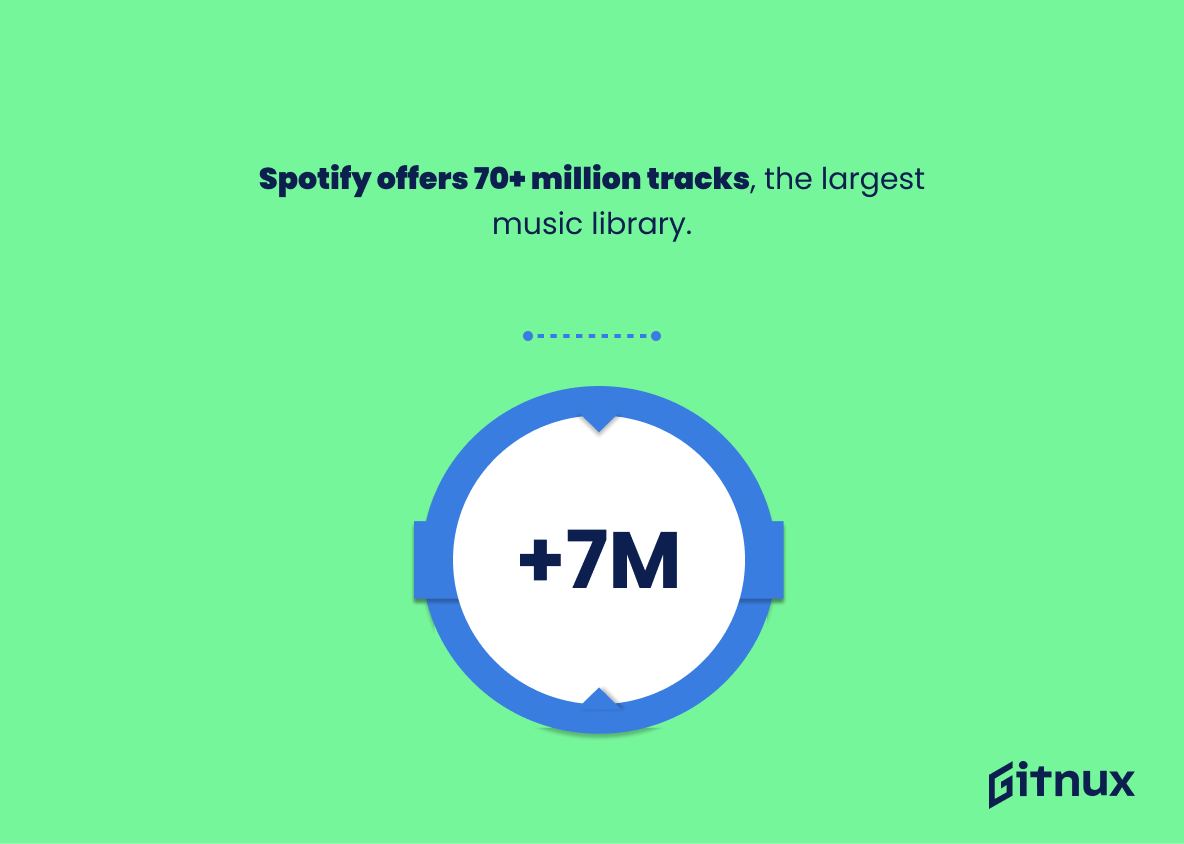Navigating the expansive universe of digital music can sometimes feel like being lost at sea; but fear not, our comprehensive guide on Music Streaming Industry Statistics is here to be your compass. Feast your eyes on the intricate ebbs and flows of this ever-evolving industry; where rhythms and algorithms dance together in a symphony of streaming, downloads, and subscriptions. Discover how streaming has catapulted the music industry to new heights, particularly in the last decade, and the key players steering this musical ship towards uncharted territories. Whether you’re a music enthusiast wanting to understand the trends, an artist aiming for the spotlight, or a marketer strategizing a campaign, our in-depth look at the Music Streaming Industry Statistics promises to strike the right chord. With your headphones on and curiosity tuned in, get ready to embark on a melodious journey that decodes the rhythm of this digital revolution.
The Latest Music Streaming Industry Statistics Unveiled
In 2020, global music streaming revenue was approximately 23.1 billion U.S. dollars.
In the dynamic realm of the Music Streaming Industry, the staggering USD 23.1 billion revenue generated globally in 2020 manifests the industry’s robust expansion. This figure serves as a testament to music streaming’s ascension as the go-to mode of music consumption, compelling readers to marvel at the sector’s exponential growth. It is a golden thread weaving through the narrative of an industry that’s not just thriving, but changing the way we appreciate music. It’s by diving into such substantial figures that we illuminate the profound impact and potential of the music streaming industry. Strongly corroborating streaming’s front-runner position in the musical landscape, this statistic paints an undeniable growth trajectory, promising an optimistic future for aspiring entrepreneurs, artists, and investors within this industry.
The number of paid subscribers for music streaming platforms reached 487 million in 2021.
Dive into the undertows of the Music Streaming Industry Statistics and one cannot help but notice a resounding echo – the billowing number of paid subscribers for music streaming platforms that hit a crescendo at 487 million in 2021. This figure is not just another melody in the symphony; it’s the powerful crescendo that brings the whole composition to life. It paints a convincing picture of how much people are willing to invest in music streaming platforms – a testament to their popularity and far-reaching influence. This particular number encapsulates the impact of relentless digital transformation, elucidating consumers’ shift from traditional music sources, such as radio and physical media, to contemporary online streaming services. It also raises the volume on predictions of future growth in the music streaming industry, making it a key chart topper in our statistical playlist.
Furthermore, this voice in the chorus reveals the potential revenue that artists, producers, and record labels can tap into, making it a melody that they might want to dance to. Ultimately, this 487 million-strong chorus of paid subscribers sets the tone for the understanding, evaluation, and future composition of strategies throughout the music streaming industry.
In 2021, the global user penetration for music streaming was around 18.8% and is expected to hit 23.8% by 2025.
Using the rhythm and beat of numbers, consider the orchestration of this fascinating statistic – in 2021, the global user penetration for music streaming spun at 18.8%, an audience that’s predicted to crescendo to 23.8% by 2025. This harmony of growth within the Music Streaming Industry dances to the tune of change, technology, and consumer behavior, setting the tempo for the years to come. Be it for an artist, a producer, or a passionate fan, understanding these numbers provides a glimpse into the future soundstage, influencing strategies, collaborations, distribution, and ultimately the production of the music we all love. Thus, the changing tunes of these numbers become the soundtrack to the evolution within the music streaming continuum.
In the United States, 68% of the total music revenues in H1 2021 came from music streaming services.
This potent statistic is a crescendo that resonates profoundly across the music streaming narrative. It transforms a mere auditory experience into an analytical spectacle, underscoring the meteoric rise and dominance of music streaming services within the American market. As a performance indicator, the 68% contribution to music revenues in H1 2021 accentuates a consumer preference shift, aligning more with these digital services than traditional music platforms. Hence, it forms the backbone of any discourse on the Music Streaming Industry Statistics, shedding light on market trends, consumption patterns, and the rapidly evolving musical landscape. This numerical testament essentially widens the lens through which we perceive the impacts and implications of this digital phenomenon in the wider music industry.
Spotify holds a market share of 31% in the global music streaming market (as of 2021).
In the swirling storm of the global music streaming market, Spotify emerges as a beacon of dominance, wielding 31% of the market share as of 2021. This cogent statistic paints a vivid portrait of Spotify’s undeniable influence and places it at the forefront of the industry battleground. Imagine, almost one-third of all music streaming traces back to this platform. It’s a testament not just to its popularity, but its abilities to cajole loyalty and win favor from discerning auditory consumers worldwide. Analysing this metric offers invaluable insights, the fertile ground for dissecting strategies, understanding consumers’ preferences and unearthing the secrets behind Spotify’s gigantic footprint in this digital terrain. In a blog post regaling tales of the Music Streaming Industry Statistics, ignoring such a focal point would be akin to stripping the tale of its plot-twist; it simply wouldn’t do it justice.
YouTube’s Music services had around 30 million subscribers in 2020.
Delving into the vibrant landscape of the music streaming industry, the statistic showcasing YouTube Music services amassing around 30 million subscribers in 2020 becomes a crescendo in our symphony of data. This remarkable data point underscores YouTube’s influential position in this digital orchestra, serving as testament to the platform’s burgeoning popularity among music affecionados across the globe.
In the grand composition of the music streaming industry, YouTube’s strong subscriber base amplifies its key role in redefining how music is consumed today. It serves as a symphonic nod to the platform’s ability to effectively weave the threads of music with digital technology, striking a resonance highlighting the growing reliance on and preference for digital platforms in accessing, enjoying, and experiencing music among listeners.
Marshalling this statistic into our discussion, it’s akin to hitting a high note – demonstrating not just the flourishing of YouTube Music as a preferred platform, but also symbolises the continuous evolution and palpable shifts in the pattern of music distribution and consumption in the digital age. The statistic, thus, strums a pivotal chord in our exploration of music streaming industry statistics.
In 2019, revenues from on-demand music streaming services made up for almost 80% of all recorded music revenues in the US.
Casting light on a pivotal shift in the music industry, this statistic underscores the enormity of on-demand music streaming services’ influence in 2019. Accounting for nearly 80% of all recorded music revenues in the US, it sheds light on the growing dominance of these platforms. Of particular note for musicians and record label executives alike, it underlines the vital importance of adapting to this increasingly digital-centric business model. This paints a transformative landscape where traditional CD sales and concert revenues are no longer the peak of profitability. Such a statistic offers invaluable insights to anyone keen on understanding the dynamics and the ubiquitous effects of the music streaming industry in the modern age.
From 2017 to 2021, the average amount of time spent in music streaming apps globally increased by nearly 40%.
Illuminating the growth trajectory of user engagement in the music streaming landscape, between 2017 and 2021, users amped up their tune-in time by a staggering 40%. This leap forwards in streaming duration is of immense value in a dissection of Music Streaming Industry Statistics, as it underscores the escalating consumer engagement and dependence on these apps. It serves as a testament of the industry’s thriving dynamics and an indicator of the potential golden opportunities awaiting those maneuvering within this space. And for those seeking to penetrate these waves of growth, it’s an alarm bell to tune into evolving user preferences and intensifying market competition.
Amazon Music reported 55 million customers in January 2020.
Highlighting the milestone of Amazon Music reaching 55 million customers in January 2020 presents compelling empirical evidence of the ascension of digital platforms in the music streaming industry. It paints an insightful picture of industry trends, pointing to an evolving landscape where tech giants are increasingly central to the music listening experience.
Furthermore, it reflects the tremendous growth and competitive dynamism in the music streaming market, reinforcing the narrative of digitization and on-demand consumption. This statistic also prompts analysis of market share allocations among different streaming services and could fuel discussions on factors driving subscriber preference, such as platform interface, pricing strategies, and music library sizes.
In essence, this figure imbues the blog post with richness in depth and breadth, offering readers a quantitative perspective on industry behavior and customer choice in the music streaming realm.
Apple Music had 74+ million users worldwide as of 2021.
A towering landmark in the vast landscape of the Music Streaming Industry, Apple Music’s user base, teeming with more than 74 million users worldwide as of 2021, weaves an extraordinary narrative about the brand’s substantial influence and reach. This colossal figure not only reflects the ceaseless appetite for digital music consumption but also underscores Apple Music’s immense gravitational pull in the fiercely competitive music streaming cosmos. The characteristic significance of this numeric testament lies in its potential to shape and steer discussions about market trends, consumer behaviors, and digital marketing strategies in the music streaming arena, thereby serving as a cornerstone for any analytical commentary on Music Streaming Industry Statistics.
In 2020, Latin America had the highest digital music streaming penetration with 73%.
Highlighting the remarkable rate of digital music streaming penetration in Latin America in 2020 crystallizes the global impact of online music platforms. With 73% engagement, Latin America tops the chart, signaling a shift in music consumption habits towards more digital platforms in the region. This nugget of information paints a clear picture of the market’s evolution and poised growth potential, and is a valuable resource for stakeholders when strategizing and tapping into this burgeoning segment of the Music Streaming Industry.
Spotify held over 94 million active users in Europe as of Q2 2021.
In the realm of Music Streaming Industry Statistics, the fact that Spotify recorded over 94 million active users in Europe by Q2 2021 paints an intriguing picture. It frames Spotify as a colossal player on the music streaming battlefield, wielding remarkable influence in Europe. This astronomical number speaks volumes about Spotify’s stature, suggesting their considerable command over the market, and potential dominance in consumer preference in the music streaming aptitude. Impressed upon the fabric of the digital music ecosystem, this statistic echoes loud and clear, serving as a testament to Spotify’s allure and successful strategies in captivating, and more importantly, retaining this massive user base. An exciting panorama, it offers unparalleled insights about the evolving tastes, behaviours, and preferences of music enthusiasts, making it a cornerstone in the analysis of the music streaming industry landscape.
Almost half (49%) of 16-19-year-olds used Spotify in 2021.
Navigating the waters of the music streaming industry, the relevance of the user demographic cannot be overstated. The statistic that almost half of 16-19-year-olds engaged with Spotify in 2021 becomes a beacon in the sea of data. It highlights the unwavering sway of Spotify within the younger demographic, thereby providing an invaluable insight for potential investors, advertisers and competitors alike. This age group, moving forward, is poised to dominate the consumer market, underscoring the importance of tapping into their preferences. Moreover, it underscores Spotify’s effective engagement tactics with a demographic notably known for their high curative and consumption habits in music. This paints a potent picture of Spotify’s stability in the ecosystem of the music streaming industry—a juggernaut not only steadfastly maintaining its relevance, but also commanding the musical inclination of the next generation of consumers.
Among popular music streaming services, Pandora radio held 44.13% of the demographic between 18-49 years in the U.S. in 2020.
Delving into the realm of music streaming industry statistics, it’s intriguing to pull back the curtain on Pandora radio’s prominence. With a compelling 44.13% of its grip on the US demographic spanning 18-49 years in 2020, Pandora positions itself as a powerful force. Attracting this age group–a sizeable, diverse, and influential segment known for shaping trends and augmenting market growth–showcases Pandora’s magnetism and dominant influence in the streaming industry. Its ability to captivate such a potent demographic slice pivots the needle, dictates conversations, and potentially guides the future roadmap of the music streaming sector. This highlights the strategic relevance of this statistic, offering an insightful lens through which to grasp the intricate dynamics of the music streaming industry.
Users can access over 70 million tracks on Spotify, supporting its status as the music streaming service with the most extensive library.
Highlighting that Spotify provides access to over 70 million tracks essentially underscores its dominant position in the music streaming industry. It acts as a testament to its expansive collection, a major attraction to potential subscribers who seek diverse and extensive music choices. This distinctive statistic further amplifies the heavy influence of Spotify in setting industry standards, setting it apart in a saturated marketplace. An in-depth exploration of this figure also sheds light on consumption patterns and indicates the proficiency and scalability of Spotify’s partnerships with music providers worldwide.
In 2020, 73% of people in China were using music streaming services.
This particular figure acts as an underlying melody in the tune of our narrative about the Music Streaming Industry Statistics. The striking 73% of music streamers in China during 2020 notes a profound crescendo in the symphony of digitization and technology adaptation. It sings the tale of online platforms becoming increasingly dominant, replacing traditional media for audio consumption. In the chorus of our story, it amplifies keen interest and growing acceptance towards these streaming services, waving a potentially lucrative flag for investors and music companies targeting the Chinese market. Therefore, this statistic is not just a number—it’s a momentous keynote in the ever-evolving concerto of the music streaming industry.
In 2020, online music users in China grew to approximately 627 million.
Highlighting an astounding leap in the user count, the pronouncement that approximately 627 million people in China used online music platforms in 2020 plants a major flag post for the music streaming industry’s growth narrative. A dramatic influx of reliance on digital music delineates the seismic shift in consumer behavior, with an increasing number of people pivoting towards streaming platforms. As we carve out statistics about the music streaming industry, this figure not only portrays the soaring popularity of such services but also unfolds the enormous potential for expansion in the Chinese market. This is indeed a testament to the transformative effect of technology on the music industry.
Deezer, a music streaming service, had 16 million monthly active users in 2020.
Embedded within the sweeping landscape of the music streaming industry, the statistic illuminating Deezer’s 16 million monthly active users in 2020 establishes a crucial benchmark. It offers a tangible measure of consumer engagement and trust in this particular platform. As such, it gives life to the competitive dynamics within the industry by pointing out Deezer’s market position among its rivals. Not to mention, it brings into focus potential growth prospects, audience reach, and the adoption rate for such services, all pivotal considerations for anyone deeply interested in the music streaming Pandora’s box. This chiseled number essentially serves as a guide, a beacon of light, to navigate the vast ocean of the streaming industry statistics.
78% of Australian consumers used music streaming services in 2019.
Spotlighting this number, 78% of Australian consumers engaged with music streaming services in 2019, offers a compelling illustration of the pivotal role streaming services play in the music consumption landscape. This notable figure suggests a radical shift in how people access and enjoy music, trading traditional ways – such as radio, CDs, and even downloads – for these platforms. A deep dive into this statistic reveals the streaming service industry as a powerhouse, a story of growth with Australians providing a formidable stage. For key players, rivals, and entrants in the streaming services industry, understanding this marked change in behavior is crucial to sharpen their market strategies, adapt their service offerings, and remain competitive in this evolving industry, thereby driving more compelling engagement with listeners. This critical insight can guide them to resonate more effectively with their Australian user base and potentially rewrite their global expansion narratives.
In 2021, the average revenue per user (ARPU) of the Music Streaming segment in Canada was projected to be approximately 26.16 U.S. dollars.
Drumming up the melody of numbers, the sensational figure of approximately $26.16, the estimated average revenue per user (ARPU) of the Music Streaming segment in Canada for 2021, harmoniously tunes into our discussion on Music Streaming Industry Statistics. It choreographs a detailed account of how profitable each user is to the music streaming industry in the pleasant land of maple syrup – Canada. This noteworthy magnitude serves as the lyrics to the song of monetary benefits and user behavior patterns in the industry, providing a robust perspective on both profitability and popularity for stakeholders and enthusiasts alike. Indeed, it’s as appealing as a catchy chorus, vitally sparking insightful dialogues and strategic decisions around marketing, investment, and service enhancements in the very rhythm of the Canadian music streaming milieu. Now, isn’t that a chart-topper?
Conclusion
The music streaming industry has fundamentally transformed the way we consume music, making it more accessible, diverse, and personal than ever before. Industry statistics reveal impressive growth numbers, indicating that streaming platforms are not just a trend, but the future of music distribution. This change is proliferated by the rise of technology, expanding globalization and the preference of younger generations. As the online streaming platforms continue to increase their user base, introduce innovative features and provide tailored experiences, the music-streaming industry is expected to become even more expansive and influential. Staying abreast with these statistics is crucial for anyone connected to the music industry, to adapt and thrive in this ever-evolving digital era.
References
0. – https://www.www.musicbusinessworldwide.com
1. – https://www.www.businessofapps.com
2. – https://www.www.spotify.com
3. – https://www.www.statista.com
4. – https://www.www.forbes.com
5. – https://www.www.appannie.com

